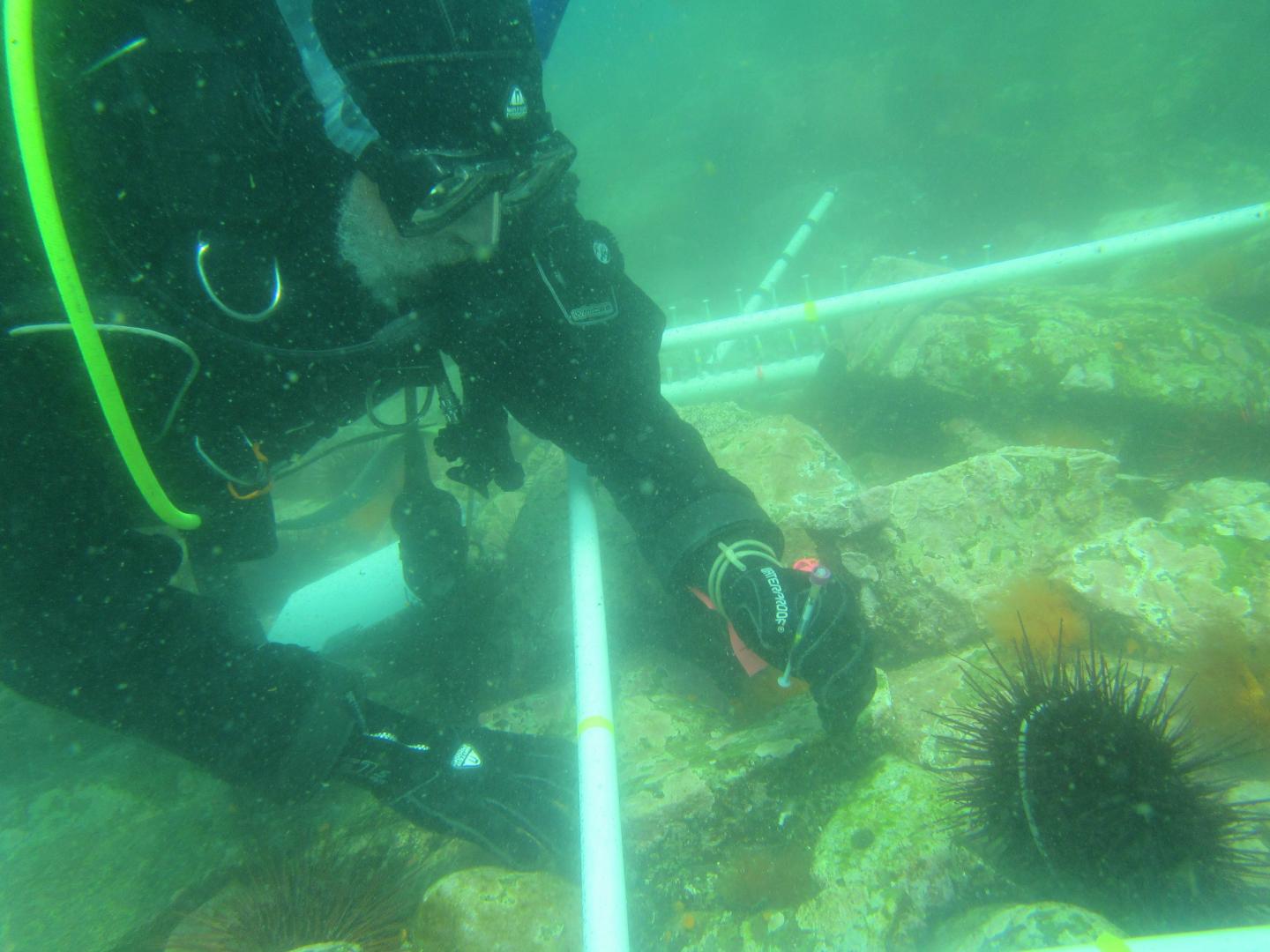
Credit: Keeha Levitan
The delicately mannered dance between discerning eggs and vying sperm is more complicated than scientists once believed, and it may hold secrets about the evolution of new species.
In a paper published in the journal American Naturalist, Chair and Professor of Biological Science Don Levitan investigates a root mystery in our scientific understanding of sexual reproduction: Do sperm compete and do eggs ever have a choice?
When it comes to sea urchins at least, the answer is yes.
Using sea urchin populations off the Pacific coast of Canada, Levitan set out to determine the degree to which, among marine animals using external fertilization, sperm from multiple males compete to fertilize individual eggs. Sea urchins are considered a good model species for scientists as they seek to better understand marine organisms because the spiny animals can be easily induced to spawn.
That makes them perfect for the study of fertilization and compatibility.
"Patterns of fertilization and the evolution of reproductive compatibility are important processes for marine organisms," Levitan said. "They are mechanisms that can drive the development of new species,"
In nature, sea urchins release clouds of sperm and eggs that fertilize while floating in the water. In this study, Levitan induced males to spawn and then collected tiny parcels of seawater — enough for a population of sperm to immediately interact with an egg — in syringes stocked with scores of unfertilized eggs.
Later, Levitan conducted paternity analyses on the newly fertilized eggs in order to detect the number of individual males' sperm present in the samples. His findings defied his expectations: Sperm from multiple males were competing to fertilize single eggs, and the eggs appeared to be choosing their preferred mate from among the crowd.
"While we expected to find that single eggs generally encounter sperm from a single male, we found that eggs are often simultaneously encountering sperm from more than one male in the brief interval between sperm contact and fertilization," Levitan said. "This is the first evidence that sperm from different males compete for the same egg, which indicates an opportunity for eggs to have a choice."
When sperm cells suspended in the ocean are searching for a favorable mate, they rely on a surface coat of recognition proteins to bind to and fertilize receptive eggs.
According to a traditional understanding of selection processes, the sperm with more effective proteins should be selected for systematically, whereas sperm with less effective proteins, with their inferior fitness for fertilization, should be quickly culled from the gene pool.
However, it's often the case that sperm with less effective recognition proteins are actually more likely to successfully fertilize an egg.
"It's a little puzzling," Levitan said. "One would think that within a species, the most compatible protein should always be selected. So why do we consistently see variation in the effectiveness of these proteins in the population?"
The answer to this question might be found in an evolutionary call and response between temperamental sperm and egg cells.
In past research, Levitan has found that less compatible proteins can be favored when sperm are so abundant that there is a risk of multiple sperm fertilizing an egg, a fatal process called polyspermy. Because less compatible sperm are less likely to inundate and kill an egg, eggs might evolve lower compatibility surfaces to avoid polyspermy. In turn, sperm may then evolve to match these new egg surfaces. This can produce a mixture of sperm and egg compatibility types that sets the stage for sperm competition and egg choice.
When sperm from multiple males arrive at an egg concurrently, eggs are able to choose the sperm whose recognition proteins are best suited for healthy fertilization. This selection process can spur the evolution of new recognition proteins, eventually resulting in reproductive isolation and, in some cases, the creation of new species altogether.
"Sexual selection within a species can cause variation in recognition proteins, and that can lead to assortative mating, where only certain types mate with other certain types," Levitan said. "If you have assortative mating and you have disruptive selection, where individuals who cross over to a different type don't do very well, that can eventually generate reproductive isolation and speciation."
These processes are critical for marine species that use external fertilization, the major mode of reproduction in the ocean. But Levitan believes scientists may soon find sperm competition and egg choice are equally important for internal fertilizers like mammals.
"These are the sort of sperm and egg cell interactions that drive divergence among populations, within populations and among species," Levitan said. "What I'm hoping is to generate interest in these interactions so we can better understand how general they are for both internally and externally fertilizing species."
###
This research was funded by the National Science Foundation.
Media Contact
Zachary Boehm
[email protected]
850-645-1504
@floridastate
http://www.fsu.edu
Related Journal Article
http://dx.doi.org/10.5061/dryad.c57rf





